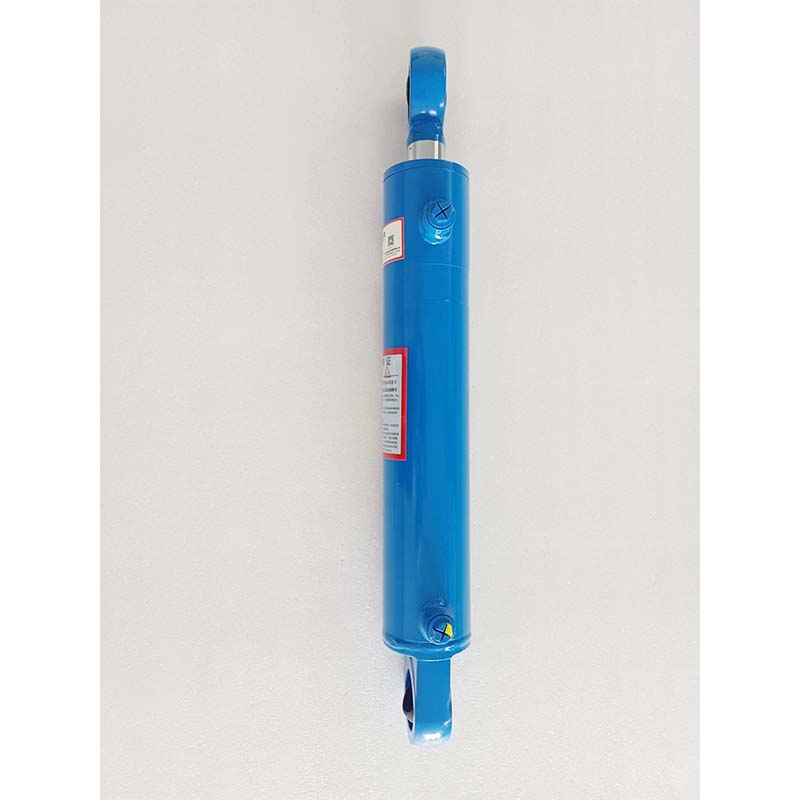Dec . 10, 2024 10:17 Back to list
Carbon Fiber Hydraulic Cylinders for Enhanced Performance and Durability in Industrial Applications
The Rise of Carbon Fiber Hydraulic Cylinders A New Era in Engineering
In the world of engineering and manufacturing, materials play a critical role in determining the performance and efficiency of products. One such material that has recently gained significant attention is carbon fiber. Known for its incredible strength-to-weight ratio and corrosion resistance, carbon fiber is revolutionizing various industries, most notably in the production of hydraulic cylinders. This article explores the advantages of carbon fiber hydraulic cylinders, their applications, and the future potential they hold.
Understanding Hydraulic Cylinders
Hydraulic cylinders are mechanical devices that utilize pressurized fluid to create linear motion. They are widely used in construction machinery, manufacturing equipment, and various industrial applications where heavy lifting and precise movements are required. Traditionally, hydraulic cylinders are made from metals such as steel and aluminum, which, while strong, often come with limitations regarding weight, corrosion resistance, and overall efficiency.
The Carbon Fiber Advantage
One of the primary advantages of carbon fiber is its exceptional strength-to-weight ratio. Carbon fiber components can be significantly lighter than their metal counterparts without sacrificing strength. For hydraulic cylinders, this translates into a reduction in the overall system weight, leading to improved fuel efficiency in machinery and lower operating costs. Lighter hydraulic cylinders also mean that equipment can operate more efficiently, resulting in increased productivity.
Moreover, carbon fiber is inherently resistant to corrosion, which is a common problem in hydraulic systems exposed to harsh environments. Traditional metal cylinders often require protective coatings or regular maintenance to prevent rust and degradation. In contrast, carbon fiber hydraulic cylinders can endure exposure to moisture, chemicals, and extreme temperatures without compromising their structural integrity. This characteristic not only enhances the lifespan of the cylinders but also minimizes maintenance costs over time.
Applications of Carbon Fiber Hydraulic Cylinders
carbon fiber hydraulic cylinder products

The applications for carbon fiber hydraulic cylinders are vast and varied. In the aerospace industry, for instance, lightweight components are essential for improving fuel efficiency and overall performance. Carbon fiber hydraulic cylinders can be used in aircraft landing gear, control surface actuation systems, and cargo handling applications, offering a significant advantage in reducing aircraft weight.
In the automotive sector, manufacturers are increasingly exploring the use of carbon fiber hydraulic cylinders in performance vehicles and electric cars, where every gram matters
. These lightweight cylinders help enhance acceleration, improve handling, and contribute to the overall efficiency of the vehicle.In construction and heavy machinery, carbon fiber hydraulic cylinders can be found in equipment such as cranes and excavators, where lifting efficiency and reduced weight can make a crucial difference in performance. The ability to maintain high performance while minimizing wear and tear in rugged environments makes these cylinders especially valuable in these applications.
Challenges and Future Prospects
Despite the numerous advantages, there are challenges to the widespread adoption of carbon fiber hydraulic cylinders. The manufacturing process for carbon fiber can be more complex and costly compared to traditional metals. Additionally, the technology and methods for integrating carbon fiber into hydraulic systems are still developing. Engineers and manufacturers need to work collaboratively to overcome these hurdles to fully exploit the potential of carbon fiber.
Looking ahead, research and development in materials science are expected to yield innovative solutions to these challenges. As production techniques improve and costs decrease, the penetration of carbon fiber in hydraulic applications is likely to expand. The potential for hybrid systems that combine the strengths of carbon fiber with other materials could also enhance performance further, leading to even more versatile applications.
Conclusion
Carbon fiber hydraulic cylinders represent a significant advancement in engineering, offering a perfect blend of lightweight design, high strength, and corrosion resistance. As industries increasingly prioritize efficiency and sustainability, the adoption of carbon fiber technology will undoubtedly play a pivotal role in transforming hydraulic applications. The future of hydraulic systems lies in the intimate marriage of innovative materials, like carbon fiber, and state-of-the-art engineering practices. As we move forward, the potential benefits are immense, paving the way for a new standard in performance and durability in hydraulic machinery. The rise of carbon fiber underscores a broader shift towards more sustainable and efficient manufacturing practices that could redefine entire industries in the years to come.
-
Fork Lift Power Units - Hebei Shenghan | Efficiency, Reliability
NewsJul.13,2025
-
1.5-Ton Turbocharged Cylinder-Hebei Shenghan|Hydraulic Solution,Energy Efficiency
NewsJul.13,2025
-
Auto Hoist Power Units-Hebei Shenghan|Efficiency&Industrial Lifting
NewsJul.13,2025
-
Double Acting Power Units-Hebei Shenghan|Hydraulic Solutions,Industrial Efficiency
NewsJul.13,2025
-
1.5 Ton Lifting Cylinder 70/82-40-290-535 - High-Performance Hydraulic Solution | Hebei Shenghan
NewsJul.13,2025
-
Fork Lift Power Units - Hebei Shenghan | Efficiency&Reliability
NewsJul.13,2025
